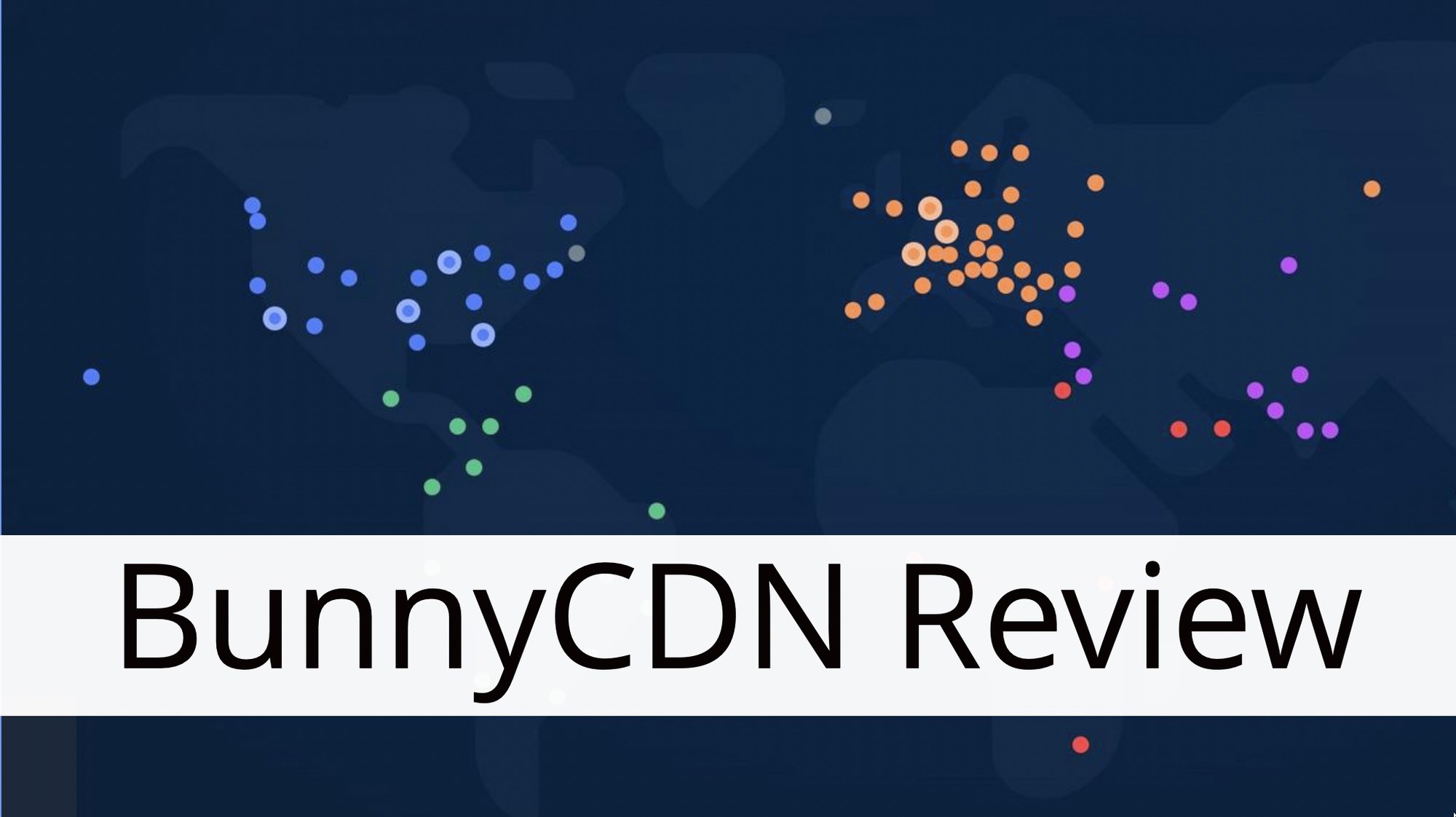In today’s digital landscape, having a strong online presence is crucial for businesses and individuals alike. Whether you’re a blogger, an e-commerce store owner, or a professional service provider, the visibility of your WordPress website plays a significant role in attracting and engaging with your target audience. This is where SEO (Search Engine Optimization) comes into play.
SEO is a set of strategies and techniques aimed at improving your website’s visibility in search engine results pages (SERPs). By optimizing various aspects of your WordPress website, such as content, metadata, and site architecture, you can increase your chances of ranking higher in search engine rankings and driving organic traffic.
But why is SEO so important? Well, consider this: when was the last time you scrolled past the first page of search results when looking for information? Chances are, it’s been a while. Studies show that websites on the first page of Google capture more than 70% of search traffic. In other words, if your website doesn’t appear on the first page, it’s unlikely to be seen by your target audience.
Now, you might be wondering how SEO can help grow your WordPress website’s online visibility. Let’s explore some key aspects of SEO and how they can contribute to improving your website’s visibility and ultimately driving more traffic and conversions. But before we dive into the specifics, let’s first understand the impact of website security on SEO rankings.
Website Security and its Impact on SEO Rankings
Website security is not only vital for protecting sensitive information and maintaining users’ trust but also plays a significant role in SEO rankings. Security breaches can have a detrimental effect on a website’s visibility in search engine results pages (SERPs), resulting in lower organic traffic and decreased online visibility. Therefore, prioritizing website security is crucial for maintaining a strong SEO performance.
Here are a few reasons why website security is essential for SEO rankings:
- User Trust and Experience: Users expect a safe and secure browsing experience. If a website is compromised and their data is at risk, they are likely to abandon the site and look for safer alternatives. Search engines like Google prioritize user experience, so if your website has a poor security track record, it may lead to higher bounce rates and lower rankings.
- Malware Detection and Removal: Search engines constantly scan websites for malware and other security threats. If your website is infected, search engines may flag it as unsafe. This can result in warnings being displayed to users, discouraging them from accessing your site. Additionally, search engines may de-index or penalize websites that are infected with malware, causing a significant drop in organic traffic.
- Website Speed and Performance: Security measures, such as firewalls and encryption, can impact website speed and performance. Slow-loading websites not only provide a poor user experience but also result in lower search engine rankings. Google considers website speed as an important ranking factor. Therefore, implementing security measures that do not negatively impact site performance is crucial.
- Backlink Profile: Backlinks play a vital role in SEO rankings. However, if your website is compromised and hackers inject spammy links, it can harm your backlink profile. Search engines may perceive these suspicious links as a black hat SEO tactic, leading to penalties and a drop in rankings. Regular security audits can help identify and remove any harmful backlinks.
- Mobile Search: With the rise in mobile usage, search engines prioritize mobile-friendly and secure websites. Google’s mobile-first indexing means that having a secure mobile version of your website is essential for SEO rankings. Without proper security measures in place, your website may not rank well on mobile search results.
Improving website security is a proactive approach towards maintaining strong SEO rankings. By investing in secure hosting, implementing SSL certificates, regularly updating software, and employing effective security plugins, you can safeguard your website’s data, users, and SEO performance.
So remember, website security is not just about protection; it also has a direct impact on your website’s visibility in search engine rankings. Prioritizing security measures will not only protect your website and its users but also help improve your SEO performance.
To learn more about improving website security for SEO, check out this comprehensive guide: Improving Website Security for SEO.
Direct Website Traffic as an Influential SEO Ranking Factor
When it comes to SEO rankings, there are many factors to consider. From keyword optimization to backlinks, the list can seem overwhelming. However, according to a recent report from SEMrush, one factor stands above the rest in terms of its influence on search engine rankings: direct website traffic.
Direct website traffic refers to the number of visitors who come to your website by directly typing your URL into their browser or using a bookmark. This is a strong indicator to search engines that your website is popular and trusted, making it a crucial SEO ranking factor.
But why is direct website traffic so important? Let’s take a closer look at why search engines place such a high value on it:
- Credibility and Authority: When people navigate directly to your website, it shows that they already know your brand or have heard about it through other channels. This suggests that your website has established credibility and authority in your industry, which search engines take into consideration when ranking your site.
- User Engagement: Direct website traffic indicates that users are actively seeking out your content or products. This demonstrates a higher level of engagement compared to traffic from referral sources or paid advertisements. Search engines value user engagement and are more likely to rank websites higher that have a higher level of direct traffic.
- Brand Awareness: The more people who visit your website directly, the more exposure and visibility your brand receives. Direct website traffic is a reflection of your brand’s awareness and popularity among your target audience. Search engines recognize this and consider it as a positive signal for your website’s rankings.
- Relevance and User Satisfaction: High direct website traffic suggests that your website is providing valuable and relevant content to users. When visitors find what they are looking for and have a positive experience on your site, they are more likely to return and recommend your website to others. Search engines aim to deliver the most relevant and satisfying results to users, and direct traffic helps indicate that your website is meeting these criteria.
In conclusion, while there are many important factors that influence SEO rankings, direct website traffic remains the most influential. It’s a strong indicator of your website’s credibility, user engagement, brand awareness, and relevance. By focusing on driving more direct traffic to your website, you can improve your SEO rankings and increase your organic visibility in search engine results pages.
So, don’t overlook the power of direct website traffic. Invest in strategies that promote brand awareness, engage your target audience, and provide valuable content to increase your direct traffic and boost your SEO rankings.
SEO Techniques for Enhancing WordPress Website’s Visibility
Are you a web developer looking to boost the visibility of your WordPress website? Look no further! In this article, we will explore some essential SEO techniques that can help improve your website’s ranking on search engine result pages (SERPs).
Optimizing SEO Techniques
When it comes to optimizing your WordPress website for search engines, there are several techniques you can employ to increase its visibility and reach a wider audience. Here are some key strategies to consider:
- Keyword Research: Conduct thorough keyword research to identify the words and phrases that your target audience is using to search for relevant content. Incorporate these keywords strategically throughout your website’s content, including in headings, titles, and meta descriptions.
- High-Quality Content: Create high-quality, informative, and original content that provides value to your visitors. This not only helps with SEO but also keeps users engaged and encourages them to spend more time on your website.
- Optimized URLs: Ensure that your URLs are clean, concise, and optimized with relevant keywords. Avoid using generic URLs with numbers and special characters; instead, aim for descriptive URLs that accurately reflect the content on the page.
- Responsive Design: With the increasing use of mobile devices, having a responsive website design is crucial. A responsive design ensures that your website adapts seamlessly across different screen sizes, improving user experience and SEO rankings.
- Image Optimization: Optimize your website’s images by compressing their file sizes without compromising quality. Use descriptive alt tags to provide context to search engines, helping them understand what the image is about.
Impact of Themes on SEO Factors
Did you know that the theme you choose for your WordPress website can significantly impact its SEO performance? Here are some important SEO factors influenced by themes:
- Website Stability: A well-coded and regularly updated theme plays a significant role in ensuring the stability and performance of your website. Themes with clean code and regular updates are less likely to cause compatibility issues or security vulnerabilities.
- Website Speed: The speed at which your website loads directly affects user experience and SEO rankings. Opt for themes that are lightweight, optimized for speed, and do not contain excessive code or unnecessary assets.
- Content Organization: Themes with proper content organization and navigation structures can make it easier for search engines to crawl and index your website. Ensure that your chosen theme offers clear and intuitive navigation menus, breadcrumbs, and sitemaps.
- Metadata Optimization: Themes with built-in SEO features can simplify the process of optimizing your website’s metadata, such as titles and meta descriptions. These elements play a crucial role in determining how your website appears on search engine result pages.
- Indexation: A theme’s code can impact search engine crawlability and indexation. Choose themes that are optimized for SEO and ensure that search engines can easily access and index your website’s content.
Remember, while WordPress.com is search-friendly by default, implementing these SEO techniques can further enhance the visibility of your website and attract more organic traffic.
For more detailed information on essential WordPress SEO techniques, check out this informative article on Essential WordPress SEO Techniques. Whether you’re new to SEO or a seasoned professional, these techniques will surely help you improve your WordPress website’s visibility and reach.
Handling Traffic Spikes with WordPress Plugins and Custom Coding
When it comes to website traffic, nothing can be more exhilarating (or nerve-wracking) than experiencing a sudden spike in visitors. While it’s undoubtedly a positive sign of growth and increased visibility, it can also put significant strain on your website’s resources and performance. That’s where WordPress plugins and custom coding come into play.
WordPress, one of the most popular content management systems (CMS) on the web, provides a robust foundation for building websites. However, its default settings and configurations may not be optimized to handle unexpected or sustained traffic spikes. That’s where plugins and custom coding can help to alleviate the strain and keep your website running smoothly.
Here are some ways plugins and custom coding can help you handle traffic spikes on your WordPress site:
1. Caching Plugins
Caching plugins are essential tools for improving website performance and handling increased traffic. These plugins create static versions of your web pages and store them on the server. When a visitor requests a page, the cached version is served, minimizing the load on the server and reducing page load times. Some popular caching plugins for WordPress include:
2. Content Delivery Network (CDN) Integration
A Content Delivery Network (CDN) is a network of servers distributed geographically to deliver content to users based on their location. By integrating a CDN with your WordPress site, you can distribute the load of traffic spikes across multiple servers, improving site performance and reducing the strain on your hosting server. Some popular CDN services compatible with WordPress include:
3. Load Balancing
Load balancing involves distributing incoming traffic across multiple servers to avoid overwhelming any one server. This can be achieved through custom coding and the use of load balancing plugins. Load balancing ensures that your website can handle increased traffic by spreading the load evenly across multiple servers or instances. Some load balancing plugins for WordPress include:
4. Database Optimization
A poorly optimized database can slow down your WordPress site, especially during traffic spikes when there are numerous database requests. Optimizing your database can improve site speed and performance. Several plugins help to optimize and clean up your WordPress database, including:
5. Scalable Hosting Solutions
In addition to plugins and custom coding, it’s crucial to choose a hosting provider that offers scalable resources. Scalable hosting solutions allow your website to adapt to increased traffic demands by automatically allocating more server resources as needed. Some popular WordPress hosting providers with scalable options include:
In conclusion, handling traffic spikes on your WordPress site requires a combination of plugins, custom coding, and scalable hosting solutions. By implementing caching plugins, integrating a CDN, load balancing, optimizing your database, and choosing a hosting provider with scalable resources, you can ensure that your website can handle unexpected and sustained traffic spikes. So, whether your website is experiencing a sudden surge in visitors or you’re expecting increased traffic due to a marketing campaign, be prepared to handle the influx with the right tools and strategies.
Implementing SEO Strategies to Increase Organic Traffic
🚀 Welcome to the world of SEO! Are you ready to boost the organic traffic to your WordPress site? Implementing effective SEO strategies is key to gaining visibility in search engine results pages (SERPs) and attracting more visitors to your website. In this article, we’ll explore some actionable techniques to help you increase organic traffic and improve your website’s ranking. Let’s get started!
1. Perform Keyword Research
✏️ Keywords play a vital role in SEO, as they help search engines understand the content of your website. By utilizing relevant keywords in your website’s content, meta tags, and headings, you can optimize it for higher visibility. Here’s how you can perform keyword research for your site:
- Use Keyword Research Tools: Tools like Google Keyword Planner, SEMrush, or Moz’s Keyword Explorer can help you find popular and relevant keywords related to your niche.
- Analyze Competitor Keywords: Take a look at the keywords your competitors are targeting. This can give you insights into what is working in your industry.
2. Optimize Your On-Page Elements
✏️ Optimizing your website’s on-page elements is crucial for SEO success. Here are some key areas to focus on:
- Optimize Meta Tags: Ensure that your meta title and description accurately represent the content of your page and include relevant keywords.
- Use Headers and Subheaders: Organize your content with headers (H1, H2, H3) and subheaders. This helps search engines understand the structure of your content.
- Optimize URL Structure: Create SEO-friendly URLs that are descriptive and concise. Include relevant keywords when possible.
3. Create High-Quality Content
✏️ Content is king in the world of SEO. Publishing high-quality, informative, and engaging content can help attract more organic traffic to your site. Here’s how you can create content that ranks well:
- Provide Value: Understand your target audience’s needs and create content that offers valuable solutions or answers their questions.
- Include Relevant Keywords: Incorporate keywords naturally into your content, ensuring that they blend seamlessly with the overall context.
- Use Multimedia: Incorporating images, videos, and infographics can enhance the visual appeal of your content.
4. Build High-Quality Backlinks
✏️ Backlinks, or external links from other websites pointing to your site, are an important SEO ranking factor. Here’s how you can build high-quality backlinks:
- Guest Blogging: Contribute high-quality articles to reputable websites in your industry. This allows you to showcase your expertise and earn backlinks in return.
- Create Shareable Content: Produce content that is unique, valuable, and share-worthy. This increases the chances of other websites linking back to your content.
- Engage in Influencer Marketing: Collaborate with influencers or authorities in your industry who can promote your content and link back to your site.
5. Optimize Your Site’s Performance
✏️ Site speed and performance are critical factors for both user experience and search engine rankings. Improve your site’s performance with these optimization techniques:
- Compress Images: Use image optimization tools to reduce file sizes without compromising quality, improving site loading speed.
- Enable Caching: Caching helps to store frequently accessed data, reducing the time it takes for pages to load.
- Improve Mobile Responsiveness: With the increasing use of mobile devices, ensuring that your website is mobile-friendly is crucial for SEO.
Remember, implementing effective SEO strategies is an ongoing process. Continuously monitor your site’s performance, adapt to algorithm updates, and refine your SEO techniques to stay ahead of the competition. By implementing these strategies, you can increase organic traffic to your WordPress site and achieve long-term success in the world of SEO. Good luck! 🌟
Avoiding Negative Impact on SEO during Website Redesign
Introduction:
A website redesign can be an exciting opportunity to revamp your online presence and enhance user experience. However, if not executed carefully, it can have a detrimental impact on your SEO efforts, leading to a drop in organic traffic and rankings. To ensure a seamless transition and maintain your hard-earned SEO success, it’s crucial to avoid common pitfalls during the redesign process.
1. Conduct a Comprehensive SEO Audit:
Before diving into the redesign, it’s essential to have a clear understanding of your website’s current SEO performance. Conducting a thorough SEO audit will help you identify areas of strength and weakness, allowing you to strategize your redesign accordingly. Key elements to consider during the audit include:
- Keyword Analysis: Determine which keywords drive the majority of your organic traffic. Focus on preserving and optimizing these keywords during the redesign.
- Site Structure: Assess your website’s hierarchy and URL structure. Make sure to maintain the same logical hierarchy or implement redirects for any changes to preserve link equity.
- Backlink Profile: Understand the quality and quantity of your backlinks. Ensure that these valuable assets remain intact during the redesign process.
2. Preserve On-Page SEO Elements:
During the redesign, it’s crucial to preserve and optimize the on-page SEO elements that contribute to your website’s organic visibility. These elements include:
- Title Tags and Meta Descriptions: Ensure that relevant and optimized title tags and meta descriptions are retained or improved upon during the redesign. These elements impact click-through rates (CTR) and search engine rankings.
- Header Tags: Maintain the use of header tags (H1, H2, H3, etc.) to structure your content. This helps search engines understand the hierarchy and relevance of your content.
- Internal Links: Preserve internal links that guide users to valuable content on your website. Internal linking helps search engines discover and crawl your website efficiently.
3. Implement Mobile-Friendly Design:
In today’s mobile-centric world, having a mobile-friendly website is crucial for both user experience and SEO. When redesigning your website, ensure that it is fully responsive and optimized for mobile devices. This includes:
- Responsive Design: Design your website in a way that seamlessly adapts to different screen sizes and resolutions.
- Mobile Page Speed: Optimize your website’s load time on mobile devices. Slow-loading mobile pages can negatively impact user experience and SEO rankings.
- Mobile Usability: Make sure your mobile website is easy to navigate, with readable text and tap-friendly buttons.
4. Plan for 301 Redirects:
Redesigning a website often entails changes to the URL structure or page locations. To prevent the loss of valuable organic traffic and to maintain link equity, implementing proper 301 redirects is crucial. Consider the following:
- Map Old URLs to New URLs: Create a comprehensive mapping of old URLs to their corresponding new URLs. This ensures that users and search engines are redirected to the appropriate pages.
- Implement 301 Redirects: Set up 301 redirects on the server-side to redirect old URLs to their new counterparts. This preserves any link authority and ensures a smooth transition for both users and search engines.
In conclusion, a well-executed website redesign can offer numerous benefits, but it’s vital to approach it with caution, considering the potential impact on your SEO efforts. By conducting an SEO audit, preserving on-page SEO elements, focusing on mobile-friendly design, and implementing proper redirects, you can minimize the negative impact on your organic search visibility and maintain your SEO success. So, buckle up and prepare for a redesign that will enhance your website’s performance without sacrificing your hard-earned SEO rankings!
Utilizing Keywords in Meta Descriptions for SEO Optimization
When it comes to improving your website’s search engine optimization (SEO) ranking, every little detail counts. One often overlooked element is the meta description. While it may seem inconsequential, crafting a compelling and keyword-rich meta description can actually have a significant impact on your overall SEO strategy.
What is a Meta Description?
Before we dive into the importance of keywords in meta descriptions, let’s clarify what a meta description is. A meta description is an HTML attribute that provides a concise summary of a web page’s content. It typically appears below the page title and URL in search engine results.
How Do Keywords in Meta Descriptions Help SEO?
Meta descriptions serve as a preview of what users can expect when they click on a search result. By including relevant keywords in your meta description, you can indirectly improve your SEO rankings in several ways:
- Improved Click-Through Rates: When users see their search query reflected in the meta description, they are more likely to click on your link. Including keywords in your meta description helps grab their attention and entice them to click through to your website.
- Enhanced User Experience: By accurately reflecting the content of your page in the meta description, you help users find the information they’re looking for. This improves the user experience and increases the likelihood of them staying on your site, reducing bounce rates.
- Optimized Website Crawling: Search engine bots rely on meta descriptions to understand the context of your web page. By including relevant keywords, you provide them with valuable information that can improve the crawling and indexing process.
Best Practices for Including Keywords in Meta Descriptions
To make the most of your meta descriptions, here are some best practices to follow:
- Keep it Concise: Ideally, your meta description should be between 150-160 characters to ensure it displays fully in search results. Use this limited space wisely to communicate the essence of your page using relevant keywords.
- Be Specific: Instead of using generic phrasing, be specific about what users can expect from your page. Use keywords that accurately describe the content and provide value to the user.
- Avoid Keyword Stuffing: While it’s essential to include keywords in your meta description, don’t overdo it. Avoid stuffing too many keywords as it can make your description appear spammy and unreadable.
- Provide a Call-to-Action: End your meta description with a compelling call-to-action (CTA) that prompts users to take the desired action. Whether it’s “Learn More,” “Shop Now,” or “Sign Up,” a CTA can increase click-through rates.
Take Your SEO Strategy to the Next Level with Keyword-rich Meta Descriptions
By optimizing your meta descriptions with relevant keywords, you can enhance your website’s visibility in search engine results and improve user engagement. Remember to craft concise, descriptive, and enticing meta descriptions that accurately reflect your page’s content.
So, the next time you write a meta description, think beyond simply providing a summary. Utilize keywords strategically to make the most of this small but mighty SEO opportunity. 🚀
Importance of Proper Keyword Research for WordPress SEO
Proper keyword research is the cornerstone of an effective SEO strategy for your WordPress website. In a world where search engines play a crucial role in driving organic traffic, understanding how people search and what they’re searching for is key to optimizing your website’s visibility. By identifying and targeting the right keywords, you can ensure that your WordPress site appears prominently in search engine results, attracting more qualified visitors and potential customers.
Keyword research involves finding the right words and phrases that people use when searching for information related to your website’s content. It goes beyond simply guessing what people might search for, and instead relies on data-driven insights to make informed decisions. Here’s why proper keyword research is so important for WordPress SEO:
- Better Visibility in Search Results – By choosing relevant keywords that align with your website’s content, you increase the chances of your site ranking higher in search engine results pages (SERPs). When your site appears on the first page of search results, it receives more visibility and clicks, leading to increased organic traffic.
- Targeted Traffic – Proper keyword research helps you attract the right audience to your WordPress site. By understanding the search intent behind the keywords, you can align your content to meet the needs and expectations of your target audience. This not only drives more qualified traffic to your site but also improves the chances of converting visitors into customers.
- Content Optimization – Keyword research provides valuable insights into what topics and subtopics are popular among your target audience. By incorporating those keywords strategically into your website’s content, you can optimize it for search engines. This includes optimizing page titles, meta descriptions, headings, and overall content structure.
- Competitor Analysis – Keyword research also allows you to gain insights into your competitors’ strategies and identify areas where you can differentiate yourself. By analyzing the keywords your competitors are targeting, you can discover new opportunities and tailor your content to fill any gaps in the market.
To conduct proper keyword research for WordPress SEO, it’s important to use the right tools and techniques. These include:
- Google Keyword Planner – This tool, available through Google Ads, provides data on search volume, competition, and keyword ideas.
- SEMrush – An all-in-one SEO tool that offers keyword research, competitor analysis, and other SEO insights.
- Google Trends – Helps you identify popular search trends and see the relative interest in specific keywords over time.
- Keyword.io – Allows you to generate keyword ideas based on seed keywords and discover long-tail variations.
In conclusion, proper keyword research is crucial for optimizing your WordPress website’s visibility and driving organic traffic. By understanding what keywords your target audience is using and tailoring your content accordingly, you can improve your website’s ranking in search engine results and attract the right visitors. So don’t overlook the importance of keyword research in your WordPress SEO strategy!
Source: Proper Keyword Research for SEO – A Guide to Using the Best SEO-Rich Words for Higher Rankings
WordPress SEO Plugins and Website Security
In today’s digital landscape, website security is of utmost importance. Ensuring the safety and protection of your WordPress website is not only essential for safeguarding sensitive data but also for maintaining a positive user experience. But did you know that website security also plays a significant role in your website’s search engine optimization (SEO) rankings? Let’s explore how WordPress SEO plugins can help enhance your website’s security and improve its online visibility.
WordPress SEO Plugins: Combining Optimization and Security
WordPress SEO plugins are tools that help optimize various aspects of your website to improve its visibility on search engines like Google. These plugins offer a range of features, from keyword analysis and content optimization to XML sitemaps and meta tag management. While these functionalities are geared towards improving SEO, many WordPress SEO plugins also prioritize website security.
Strengthening Website Security with Plugins
WordPress SEO plugins often include built-in security features or integrate seamlessly with other security plugins. These security functionalities help protect your website against common threats such as malware, hacking attempts, and brute force attacks. Here’s how WordPress SEO plugins can contribute to your website’s security:
- Firewall Protection: Some WordPress SEO plugins come with firewall protection, which helps detect and block malicious traffic from accessing your website. These firewalls can effectively filter out suspicious requests and ensure that only legitimate visitors can access your site.
- Malware Scanning and Removal: Certain SEO plugins offer malware scanning and removal features. They regularly scan your website for any traces of malware or malicious code and help you remove them promptly. By eliminating malware, you not only improve your website’s security but also prevent your SEO rankings from being negatively impacted.
- SSL Certificate Integration: SSL (Secure Sockets Layer) certificates encrypt the connection between your website and its visitors, ensuring that sensitive data transmitted is secure. Many SEO plugins offer seamless integration with SSL certificates, making it easier for you to install and manage them.
- Two-Factor Authentication: Two-factor authentication adds an extra layer of security to your WordPress login process. Some SEO plugins include this feature, allowing you to enable two-factor authentication for your website administrators and users. This protects your website from unauthorized access and potential security breaches.
The Synergistic Relationship
The relationship between SEO plugins and website security is symbiotic. By optimizing your website for SEO, you indirectly make it more secure. At the same time, by prioritizing website security, you create a foundation for better SEO rankings. Together, they work seamlessly to enhance your website’s online visibility and protect it from potential threats.
Incorporating WordPress SEO plugins with built-in security features is a proactive approach to website maintenance. It not only helps you improve your website’s visibility on search engines but also ensures that your website remains safe and secure for your visitors.
Remember, investing in website security is not just about protecting your data; it is also about optimizing your website’s SEO performance. So, consider incorporating WordPress SEO plugins with robust security features to strengthen your website’s online visibility and safeguard it against potential threats.
Frequently Asked Questions
- What is SEO and why is it important for my WordPress website?
SEO stands for Search Engine Optimization. It is important for your WordPress website because it helps improve your website’s visibility on search engine results pages (SERPs), drives organic traffic, and increases the chances of attracting potential customers or readers.
- Which SEO practices can help grow the online visibility of my WordPress website?
Some SEO practices that can help grow your WordPress website’s online visibility include optimizing your website’s content with relevant keywords, improving page load speed, optimizing images and videos, creating high-quality backlinks, and ensuring a mobile-friendly and responsive design.
- Are there any SEO plugins specifically designed for WordPress?
Yes, there are several SEO plugins specifically designed for WordPress. Some popular ones include Yoast SEO, All in One SEO Pack, Rank Math, SEOPress, and The SEO Framework.
- Can SEO alone guarantee the growth of my WordPress website’s online visibility?
While SEO is crucial for improving online visibility, it is not the only factor. It is important to also focus on creating high-quality content, promoting your website through social media and other channels, and providing a great user experience to attract and retain visitors.
- How long does it take to see the effects of SEO on my WordPress website’s online visibility?
The time it takes to see the effects of SEO on your WordPress website’s online visibility can vary. It depends on factors such as the competitiveness of your industry, the quality of your SEO efforts, and the search engine algorithms. Generally, it can take several weeks to months to start seeing noticeable improvements.



















